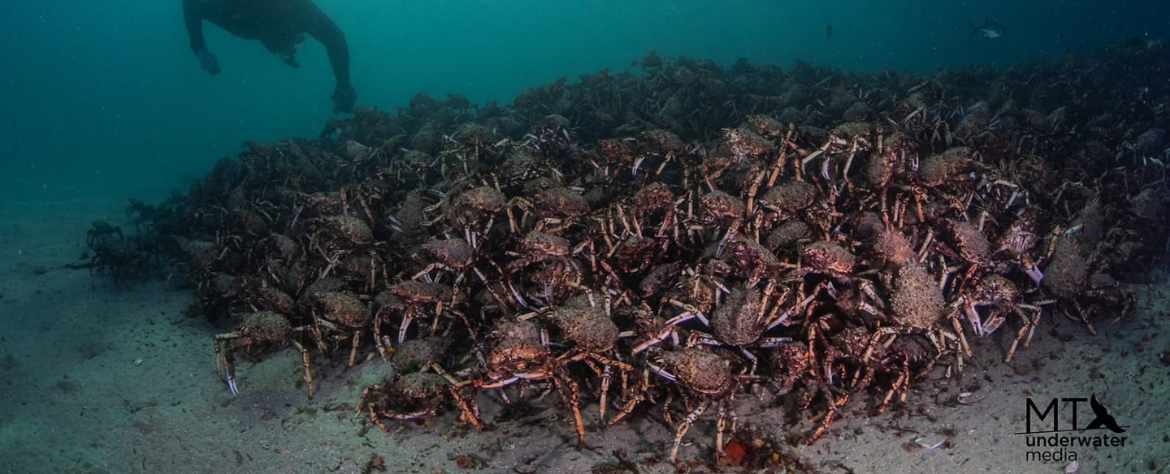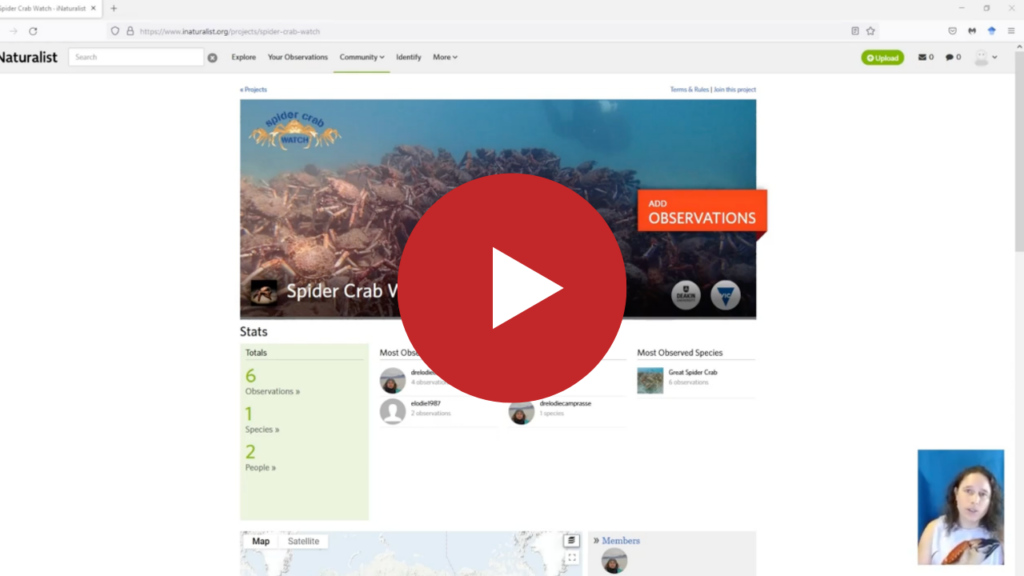
Our blue backyard of Port Phillip Bay is home to some amazing natural phenomena. One of the most exciting occurrences is certainly the annual mass aggregation of giant spider crabs (Leptomithrax gaimardii). Thousands of spider crabs gather annually in the shallows of the Bay, under piers and jetties, at artificial reefs and on the sand flats, to form mounds that can reach the height of a person.
This strategy of ‘safety in numbers’ is deployed when it is time to moult. Like all crustaceans, crabs can only grow by periodically shedding their hard, inflexible shells. When they crawl out of their old shell, they expand their soft flesh, and have to wait until their outer skin hardens into a strong carapace. During this time, they are very vulnerable to predators such as southern smooth stingrays, who are attracted to the soft-shelled crabs for a nice easy meal. Congregating with all your crab mates in large numbers in a pile means that you reduce your individual chance of being eaten.
Solving Mysteries With Citizen Science
Despite the Victorian spider crab aggregations being world-famous, we know very little about them. Even basic information on their biology and ecology isn’t really available. We have, for example, no idea where they hang out or what they are doing when they’re not aggregating, what environmental conditions trigger the aggregations (moon cycle? water temperature?), and how they decide where to aggregate and why.
It is important that we learn these things about spider crabs in order to better protect the species for the future. That’s why, for the first time ever, a team of researchers at Deakin University is now facilitating surveys to gather citizen science data on spider crabs.
The main aggregation sites on the Mornington Peninsula are well known but anecdotal information from Bay users tells us that the spider crabs can form aggregations at other times of year and at different places around the Bay as well. Potentially, they could be found anywhere in the Bay.
Because spider crab aggregations can be unpredictable and short-lived, we’d love for everyone near, on and in the Bay to keep an eye out for them and let us know when and where they are seen or not seen. Anyone who spends time with in Bay can participate: boaters, fishers, kayakers, stand-up paddle boarders, people enjoying walking on piers and, of course, divers and snorkelers.
What to Do if You See Spider Crabs
Create an account on iNaturalist and join the fun by subscribing to the Spider Crab Watch project. Logging a sighting only takes a few minutes!
Log your sighting and upload any pictures (video tutorial here). Both presence and absence information is important! In science, zero (0) is also a valuable result, so if you don’t see any spider crabs on your dive or snorkel, please log this result as well (absence video tutorial).

We love spider crab sightings with photos but they are not essential to submit sightings.
Spider Crab Privacy for Their Protection
When spotting crabs, we need to be mindful not to overwhelm them with too many visitors during this vulnerable time in their life-cycle.
To protect the crabs’ whereabouts, you can choose to change the geoprivacy settings of your sightings on iNaturalist. There are two options, and in both cases, locations will not been made public during aggregations and will only be used for research:
- “obscure” locations: locations will be displayed as a random point in a radius around the location rather than the exact spot of the sighting
- “private” locations: locations won’t be displayed on a map at all; only admins – two researchers at Deakin – will have access to the locations.
For more information about the project, contact Dr Elodie Camprasse elodie.camprasse@deakin.edu.au
This project is funded by the Port Phillip Bay Fund and delivered by Deakin University in collaboration with the EcoCentre and ReefWatch.